Photo

Ficus, Giorgio Giacomo Mariani
Vegetable lives are the inspiration for this work, trees and fractal forms, repeated and progressively reduced, so as to give way to a harmoniuos blend with infinite dimensions. It is made in hand folded iron sheets which are welded together.
https://www.saatchiart.com/art/Sculpture-Ficus/33618/2289530/view
6 notes
·
View notes
Photo

Victima, Daniel Porada
Inspiration from the art of the old masters, especially Renaissance
https://www.saatchiart.com/art/Painting-Victima/895751/4496640/view
77 notes
·
View notes
Photo

Cursive 18, Joyce Dunn
This is my first cursive painting in awhile. I always loved calligraphy. I use a Chinese calligraphy brush. I started out with some charcoal lines. I wet the paper first so the charcoal settles in and doesn’t smudge so much. Then I chose paynes grey, a dark grey, almost black. And using my calligraphy brush I I use a writing movement but not writing real letters. I just like the movement. I layer , layer after layer of strokes. Letting each layer dry before adding the next layer. I always have a few paintings going on at the same time so that when 1 piece is drying Im working on another simultaneously. Then I used some white acrylic. At the very end I quickly put in a few strokes of Chinese ink.
https://www.saatchiart.com/art/Painting-Cursive-18/738106/4424370/view
1 note
·
View note
Photo
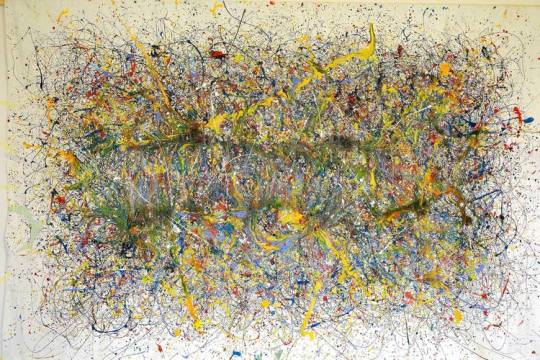
Dance, Alfredo Bertolini
A real dance.The time had stopped, the atmosphere was wonderfully magical. With impetus and love I launched the colors .... I danced, I flew, I dreamed.
https://www.saatchiart.com/art/Painting-Dance/811369/4141221/view
4 notes
·
View notes
Photo

Danza degli archetipi, ernesto di battista
Il senso del materico dato dalla tela spiegazzata e una metamorfosi delle figure che vi appaiono come un ricordo lontano e presente di cose e persone che lo abitano
https://www.saatchiart.com/art/Painting-Danza-degli-archetipi/680449/3635336/view
2 notes
·
View notes
Photo

Casa da Memória - Vila Velha ES, Angela Gomes Naif
Reproduzi essa tela com o título Casa da Memória em homenagem a I Exposição Internacional de Arte Naif - Universo da Alma Ingenua. Realizada no ano de 2016 no próprio local, na técnica em acrílica sobre tela no estilo Naif.
https://www.saatchiart.com/art/Painting-Casa-da-Mem-ria-Vila-Velha-ES/316705/3531552/view
2 notes
·
View notes
Photo

Web, Donatella Marraoni
painted on canvas with oil and cement. Scene of woman
https://www.saatchiart.com/art/Painting-Web/568846/2034639/view
10 notes
·
View notes
Photo
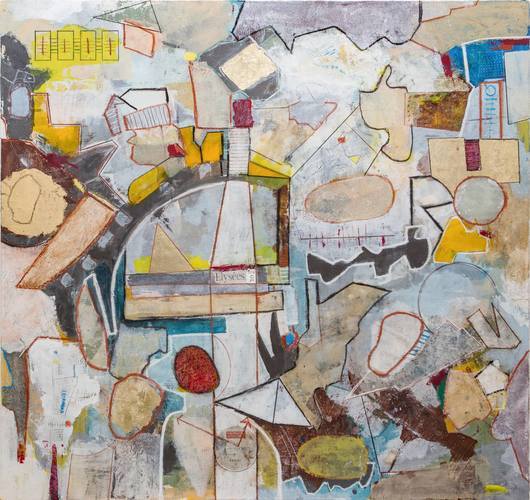
Elysées 102, Ruben Patella
Mixed media on unstretched canvas, 105 cm x 99 cm. Will be shipped rolled in a secure tube. Please note that colors may vary from monitor to monitor. I am flexible with the price, so if you are interested, make an offer.
https://www.saatchiart.com/art/Painting-Elys-es-102/716702/3563833/view
2 notes
·
View notes
Photo

L'UCCELLO D'ORO, Polina Ogiy
Peacock Ornamental bird originating from India, whose mythopoetic image mainly based on its external features — shape and typical coloration of the tail, the gait and Peacock etc. "covers a wide range of astral symbolism — from the cosmos in its entirety, and the starry sky until the moon and sun circle". Continuing the solar theme (characterized primarily to India and Southeast Asia) are associated with peacock in various traditions, the idea of abundance, fertility, immortality. The image of the peacock is closely linked to the symbolism of the eye(a) in its positive — contemplation, contemplation, view; and negative aspects — the evil eye ("evil eye"), misfortune, infertility, etc. In some traditions (India, Byzantium, etc.) is considered a Royal bird, his image — a common decoration of the thrones, along with precious stones, metals and solar animals (lion, eagle). It is believed that peacock is a fighter of snakes, and its meat is not amenable to decomposition. Associated with the storm and the rain, as it becomes restless (dancing) before the rain; dance of the peacock shares the symbolism of the spiral. In a mystical sequence of times of day meets the twilight peacock[1]. Together with the Chinese pheasant (a bird of the same family) — possible source for the image of the Phoenix. Connected with symbolism of the World tree. Image of a peacock is widely represented in heraldry and numismatics. Main meanings: the Sun, "the natural symbol of the stars"; immortality, longevity, ascension to Heaven; love; greatness of, the Royal prerogative, the spiritual superiority, perfect, infinite variety, a variegated variety of the world; "the gaiety of spirit with which God created this earth, having a good time as wanted" [bdgs]; (shining) glory, integrity, pride; talkativeness, boastfulness, vanity, relatively late connotations. Antiquity Through Babylonia, Persia, and Asia Minor, the peacock goes to Samos, where he became a sacred bird in the temple of Hera. In the V century BC in Athens as peacocks exotic rare show for the money. The emblem of the resurrection, starry vault of heaven, the unity and interrelatedness. Attribute: Pana; Hera (Juno) — is borrowed from pan as a symbol of the starry vault; the Faun. "Stars" ("eyes"), useimage peacock's tail, called the sight of the Argos — according to the myth Hera has brought them to the tail of the peacock after the death of a cow guarding IO from the giant hands of Hermes[2]. In the II century BC in Rome peacocks are sacred birds of Juno. Also used as the emblem of the Empress and her daughters (the bird of the Emperor — eagle). Represents the apotheosis, and the triumph of the winners (for Roman coins) China. As the majority of birds (crane, rooster), peacock — solar, relates to Yang. Many ideas about the peacock and its interpretation is borrowed from India: beauty; longevity; dignity, high rank; ability to expel the forces of evil; the dance at the sight of beautiful women. The emblem of the Ming dynasty. As a sign of favour (Manchu) Emperor peacock feather was handed when obtaining a high rank (of merit). Such feathers have been exhibited in vases, making peacock is a symbol of good fortune. . The peacock is often associated with peony (one of the few Yang colors), also associated with solar and Imperial symbols. Peacocks are also found in the Chinese garden. Attribute Guan-Yin; XI-Wang-Mu. Japan. Boddhisattva Kujaku-MEO (Kujaku-ke, Kujaku-May) always sits astride a peacock. Hinduism sometimes — the mount of Brahma; also go to the peacock Lakshmi and the God of war Skanda-Karttikeya; when riding on it sits the God of love Kama, it symbolizes the impatient desire. Peacock — emblema the goddess of wisdom, music and poetry Saraswati. In ancient cultures of India and later in Iran, this magnificent tail was with reference all-seeing sun and eternal cosmic cycles. In Hindu mythology, drawing its wings, resembling innumerable eyes, is considered to represent a starry sky (50). Peacock accompanies some Hindu gods such as Saraswati (the goddess of wisdom, music and poetry), Kama (the goddess of sexual desires) and God of war Skanda (who could also turn a poison into an elixir of immortality). was associated with the throne of the Hindu God Indra, Kartikeya God of war, Kartikeya also created Shiva. He also has the names of Skanda or Kumara (the young man). He never marries, because his female half (kaumari) — nothing like the army of gods. Karthikeya travels on the peacock — the symbol of power, and on the banner is the cock, welcoming a new morning. Some contradiction can be seen that the Indian Mars, God of war, Kartikeya, the wise son of Shiva, riding on the peacock, but actually there is no contradiction here: if the reading of the ancient Indian book on the art of war, we will see that wars were not a means of mass extermination, what is wars of the twentieth century — rather, they were tournaments, something like knightly tournaments in Europe. These competitions tried to make more lush and spectacular. Often, as if everything proceeded according to a pre-prepared script, a bloody battle to the death between representatives of the warring families were suddenly ended by the betrothal of boys and girls of both clans and the celebration that could last for weeks. Only gloomy ascetic, for whom the whole world is just "a Vale of sorrows" and "debauchery" for which to live PA the world itself seemed diabolical cunning, could see in the peacock the negative symbol. [bdgs] In Indian mythology, when Krishna and Radha — two incarnation of the God Vishnu — dance and amuse themselves in the eternal joy of love, they are seen peacocks. There are iconic toys, such as: Krishna and Radha on swings and on the swing poles again we see peacocks. Colorful peacock as if telling us: how hard was life, what unpleasant surprises it we brought, it is inevitable that we should find joy in life and believe that its diversity will always find a positive side. When the Indian peacock yard was always accompanied by the image of both the deities — Krishna and Radha — and was a symbol of an exemplary life of love and beauty. Juicy color of emerald as the expression of life, youth and purity, and, according to Indian legends, "imitates the color of the neck of a young parrot, new grass, a water tin, iron and the pattern of peacock tail". In Eastern India it was believed that peacock feathers bring bad luck — "eyes" in the feathers is a symbol of evil. For this reason, the stones with names such as cat's eye, tiger's eye, or oculus Beli, always evoke a certain strange interest. Buddhism. On the peacock or peacock throne usually sits Avalokiteshvara (Guan-Yin in China) is one of the most revered Bodhisattvas of Buddhist mythology, the personification of compassion, the ruler of the Buddhist Paradise in the West, according to Chinese tradition. As a permanent attribute of that dhyani-Buddha, the peacock itself symbolizes the compassionate prudence, often correlates with the West. Compassion and vigilance. A fan of peacock feathers — the attribute of Avalokitesvara, identified also with Guan Yin and Amitabha, as a symbol of compassion. Christianity "... the Gnostics, who on the threshold of the middle ages tried to reveal the secrets of God's Providence (and as a result subsequently almost all turned to heresy), chose the peacock as an expression of his mystical-philosophical revelations." If you look closely its a feather, we'll find 365 different colors. Therefore, this cosmological bird, as distinguished Vasile 365 different heavens (the number of days in a year). Interestingly, the egg of a peacock pale and unattractive. And here it is — a miracle! Out of nothing comes the rainbow — a seed, hidden in the egg, looking for an exit. Just as the egg of a peacock is bright and colourful, being fertilized seed peacock-cock, and the world needs God's seed to become attractive. [V. Schultz] [bdgs] in the medieval "Bestiaries" peacock referred to as "stoock" in the iconography of Western Christianity, the peacock drinking from the Eucharistic Cup, biting the fruit of the vine; a very widely distributed image of a peacock in Paradise of the tree of life and two peacocks on the sides of the world tree Peacock's tail, in particular, appears in the eighty-fourth emblem of the "Symbolic art" of Bochica as a symbol of the blending of all the colors and ideas of the whole (32). This explains why in Christian art it stands as a symbol of immortality (20) and the incorruptible soul (6). Immortality, resurrection, soul, and glorified before the Lord, because the peacock renews its plumage, and its meat was considered incorruptible. "One eye" all-seeing Church. Symbolizes also Holy because its tail resembles a halo. Peacock sitting on the field or the power, symbolized the ability to rise above worldly things. Romanesque art is one of common animals (along with the bull, the eagle, SACEM, a lion, a rooster, a crane, a praying mantis (grasshopper) and partridge (50). In Christian art the peacock is used as a symbol of immortality. In early Christianity the preference for positive interpretations of the peacock. Its meat was considered incorruptible (a symbol of Christ in the tomb), loss of feathers and their new growth in spring similarly was seen as a symbol of renewal and resurrection. peacock meat until the early modern period was considered a food that gives strength to the sick. The peacock often appeared at the grotto in Bethlehem where Christ was born: two peacocks who drink from the same Cup, indicate a spiritual revival, it is this meaning that he is present in scenes of the Nativity. Sometimes peacocks appear in Christian art in Christmas scenes or drinking from the Cup — in both cases as a symbol of eternal life. The "eyes" of peacocks was understood as indicating divine omniscience, "Thousands of eyes" on the peacock's tail are sometimes used as the symbol of the "all-seeing" Church. Continued to operate and antique folk belief according to which the blood of a peacock casts out the demons. with the wings of the cherubim that support the throne of Jehovah. and the cherubim are faced with four wings of peacock feathers. On the other hand, the Christian doctrine of humble life led to the fact that the sins of pride, luxury and vanity, and became identified with the image of the peacock (this tradition originates in the texts of the II century ad "Psychology"). Therefore, in Western art the peacock is often the personification of Pride. Negative features are observed in the early Christian text "Physiologus" where peacock: struts, with pleasure looks at himself and shakes his plumage, condescending and arrogantly looks around. But if he will look at his paws, he angrily exclaims, as they do not match the rest of his appearance. If you are a Christian, this is the symbolical interpretation, see his dignity, he may sing; but when you see his legs, namely his flaws, then turn with a complaint to God and hate injustice, like a peacock hates his paws, that you appeared before the (heavenly) bridegroom justified. This starts in the usual appeal for today symbolic meaning, which are from the medieval "Bestiaries" makes the peacock a bird, symbolizing the vanity of luxury and arrogance (haughtiness). When you praise a peacock, he raises and dismisses his tail, like a preacher at praises of flatterers in vain extols the greatness of his spirit. If he raises his tail, his backside laid bare, and he becomes a laughingstock when he chanetsa arrogant. So, the peacock needs to keep his tail low, so that everything the teacher does humbly do. [Unterkircher] In the Baroque era to the scenes of the way of the cross to Calvary Jesus, stripped of their clothes, atoning for the people's sin of vanity which presents placed next to a peacock. The common attribute of Saint. Barbara is a peacock feather, which points to Heliopolis, the city where she was born. It is believed that in this city reborn from the ashes of the mythical bird the Phoenix, but ignorance of how it could look like Phoenix have led to its replacement with a peacock. Alchemy In the West the peacock is a fighter snake and iridescent paint tail was attributed to its ability to transform snake venom into solar substance. Iridescent paints pavlini tail in some texts and images is a sign of impending transformation of lower substances into higher. Sometimes the symbol of a failed process, which brings only the slag (caput mortuum dead head). at the same time, some European beliefs, associated, probably, "eyes", useimage peacock's tail, with Heraldry In heraldry, a peacock is only sometimes (for example, stamp the figure graphs the background of View, helmet-treasure of the counts von Ortenburg, peacock tail as a helmet-treasure of the Grand Dukes of Austria, peacock fan as a decoration stamp hats princes von Schwarzenberg, count von Henneberg, etc.), and, of course, there was a positive interpretation of the image of the peacock (resurrection, the shining). Here, from the East, came to Europe the image of peacock or just peacock feather in the hat of the knight as a symbol of his high moral sense. The emblematic Peacock showing its tail. I have to admire. The character of buck, a loving bright and colorful dress and not proven by any other qualities. All his care and interest — to show his flashy outfit. [EMSI tab.18-8,p. 179] a Peacock with her tail. He loves to show socego brightness of plumage. "A symbol of pride showing itself. This is especially true for women who love dresses and jewelry. To wear beautiful clothes For women is as natural As to dissolve the peacock for his tail. [EMSI tab.23-13,p. 201] Trying to sing a peacock with her tail. Should I be quiet enough to be enjoyable. "The character of the dandy, which is the brightness of his attire, maybe like a peacock, go for something outstanding, but when he opens his mouth, it immediately is ridiculous." [EMSI tab.22-15,p. 197] . August is the eighth month of the year, got its name from the Roman iperator, is personified as "the old man, holding in the mouth of the Cup with a refreshing drink and a fan, made of peacock feathers. ..." [EMSY § 195] the eye Image and stars as light sources, closely connected with the symbolism of the peacock, and of themselves as signs of alertness. Peacock's tail, in particular, appears in the eighty-fourth emblem of the "Symbolic art" of Bochica as a symbol of the blending of all the colors and ideas of the whole (32). This explains why in Christian art it stands as a symbol of immortality (20) and the incorruptible soul (6). Psychology is the Ratio of Swan/harp, corresponding to the axis of water/fire, denotes melancholy and passion, self-sacrifice, a path of tragic art and martyrdom. On the contrary, the ratio peacock/lute, combined with a pair of earth/fire is probably a representation of logical thought (50). According to (6) — indicates the psychic duality of man (related to the myth of the Twins), which draws life force from the principle of unity. Крылья, смело раскрывая, Отрываюсь от земли. Я полетом наслаждаясь, Крикну небу: “Жди” И целуя ветер в губы, Я исполнена любви. Допуская ветер в сердце, Я твержу ему: ”Гори” Дай мне, солнце, силу света, Жизнь дарить в пути. От восхода до рассвета, Наполнять себя, огнем мечты. Pollin 2006.
https://www.saatchiart.com/art/Painting-L-UCCELLO-D-ORO/826122/2768795/view
3 notes
·
View notes
Photo
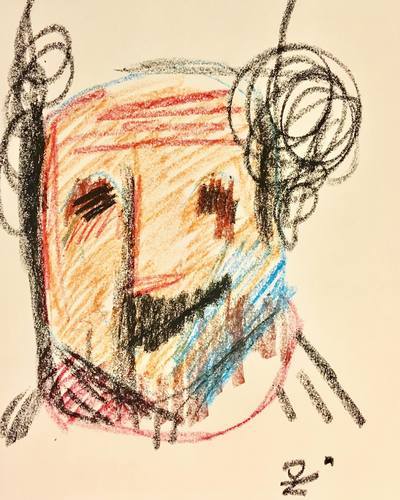
Bold Man, Mattia Paoli
This drawing is a minimalist portrait. The face is designed by colour lines.
https://www.saatchiart.com/art/Drawing-Bold-Man/820040/4106110/view
0 notes
Photo
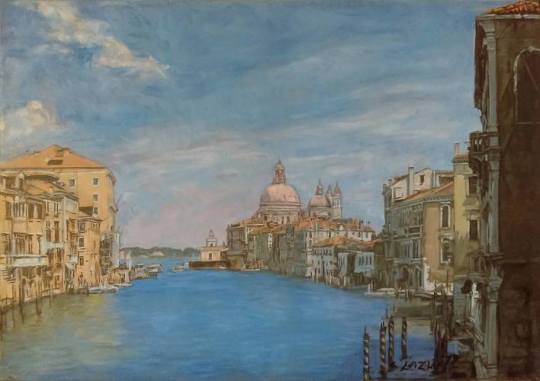
Venice I, Zdzislaw Lazuk
One of the more amazing views of the city of Venice. Painted while traveling to Italy.
https://www.saatchiart.com/art/Painting-Venice-I/1103496/4392296/view
8 notes
·
View notes
Photo
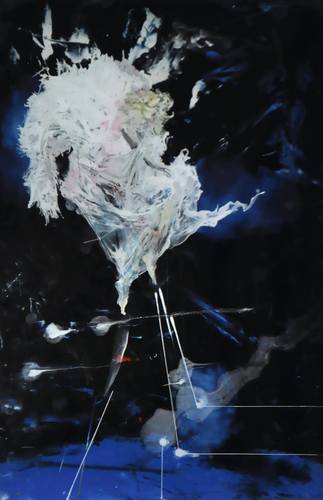
Blessing, Milos Komadina
Here I wanted to try a Tiepolo my way. My old desire to paint angels and celestial figures. Hope to continue ...
https://www.saatchiart.com/art/Painting-Blessing/419914/3269335/view
3 notes
·
View notes
Photo
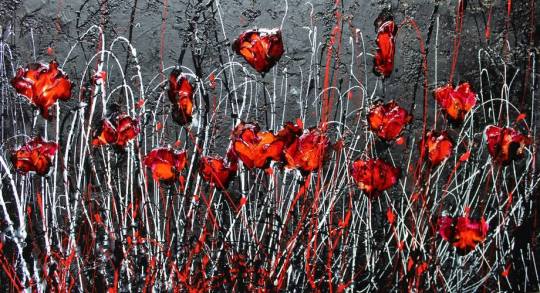
Pigiama party, Donatella Marraoni
Painted on wood with oil gloss and cement..........
https://www.saatchiart.com/art/Painting-Pigiama-party/568846/4276095/view
0 notes
Photo
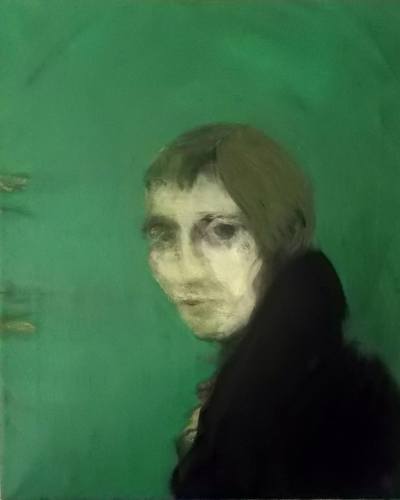
one, Britta Winkels
face she he poet
https://www.saatchiart.com/art/Painting-one/346963/2061690/view
3 notes
·
View notes
Photo
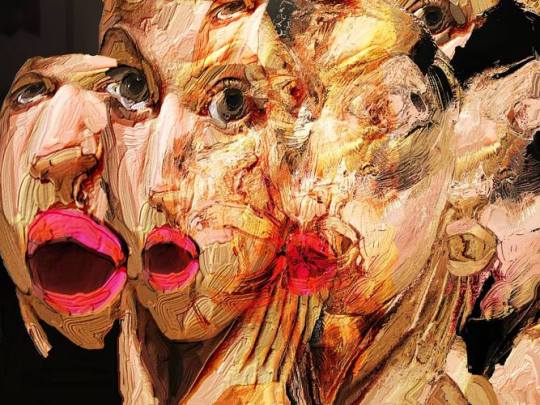
004 The Color’s Scream (HOMO LUDENS) 04, Eva Gyorffy
Painting
https://www.saatchiart.com/art/Painting-004-The-Color-s-Scream-HOMO-LUDENS-04/56978/2307153/view
12 notes
·
View notes
Photo
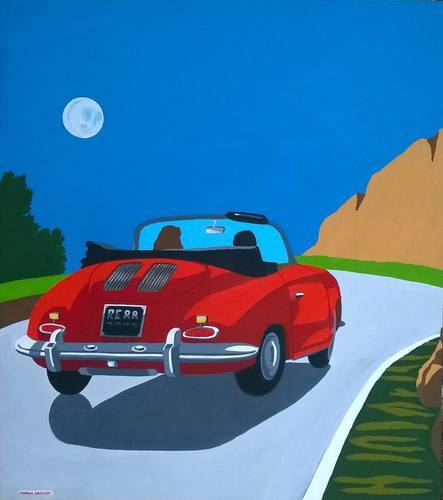
IN VIAGGIO, Marco Arduini
UN VIAGGIO IN DUE, FORSE AMANTI, AL CHIARO DI LUNA CON UN AUTO SPORTIVA APERTA PER RESPIRARE L'ARIA SERALE E NON PENSARE A NULLA MA GODERSI UN VIAGGIO...
https://www.saatchiart.com/art/Painting-IN-VIAGGIO/42472/3233506/view
1 note
·
View note
Photo

La rivoltosa (Riot), Daniela Di Lullo
Acrylic painting on canvas, the subject is la Rivoltosa wants to be an indication to not follow the masses and to always have a critical and passionate sense for life.
https://www.saatchiart.com/art/Painting-La-rivoltosa-Riot/86493/4370251/view
3 notes
·
View notes